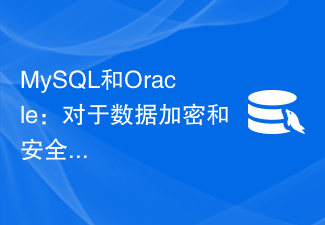相同点
都属于序列类型的数据
所谓序列类型的数据,就是说它的每一个元素都可以通过指定一个编号,行话叫做“偏移量”的方式得到,而要想一次得到多个元素,可以使用切片。偏移量从0开始,总元素数减1结束。
例如:
>>> welcome_str = "Welcome you" >>> welcome_str[0] 'W' >>> welcome_str[1] 'e' >>> welcome_str[len(welcome_str)-1] 'u' >>> welcome_str[:4] 'Welc' >>> a = "python" >>> a*3 'pythonpythonpython' >>> git_list = ["qiwsir","github","io"] >>> git_list[0] 'qiwsir' >>> git_list[len(git_list)-1] 'io' >>> git_list[0:2] ['qiwsir', 'github'] >>> b = ['qiwsir'] >>> b*7 ['qiwsir', 'qiwsir', 'qiwsir', 'qiwsir', 'qiwsir', 'qiwsir', 'qiwsir']
对于此类数据,下面一些操作是类似的:
>>> first = "hello,world" >>> welcome_str 'Welcome you' >>> first+","+welcome_str #用+号连接str 'hello,world,Welcome you' >>> welcome_str #原来的str没有受到影响,即上面的+号连接后从新生成了一个字符串 'Welcome you' >>> first 'hello,world' >>> language = ['python'] >>> git_list ['qiwsir', 'github', 'io'] >>> language + git_list #用+号连接list,得到一个新的list ['python', 'qiwsir', 'github', 'io'] >>> git_list ['qiwsir', 'github', 'io'] >>> language ['python'] >>> len(welcome_str) #得到字符数 11 >>> len(git_list) #得到元素数 3
区别
list和str的最大区别是:list是原处可以改变的,str则原处不可变。这个怎么理解呢?
首先看对list的这些操作,其特点是在原处将list进行了修改:
>>> git_list
['qiwsir', 'github', 'io']
>>> git_list.append("python")
>>> git_list
['qiwsir', 'github', 'io', 'python']
>>> git_list[1]
'github'
>>> git_list[1] = 'github.com'
>>> git_list
['qiwsir', 'github.com', 'io', 'python']
>>> git_list.insert(1,"algorithm")
>>> git_list
['qiwsir', 'algorithm', 'github.com', 'io', 'python']
>>> git_list.pop()
'python'
>>> del git_list[1]
>>> git_list
['qiwsir', 'github.com', 'io']
以上这些操作,如果用在str上,都会报错,比如:
>>> welcome_str
'Welcome you'
>>> welcome_str[1] = 'E'
Traceback (most recent call last):
File "<stdin>", line 1, in <module>
TypeError: 'str' object does not support item assignment
>>> del welcome_str[1]
Traceback (most recent call last):
File "<stdin>", line 1, in <module>
TypeError: 'str' object doesn't support item deletion
>>> welcome_str.append("E")
Traceback (most recent call last):
File "<stdin>", line 1, in <module>
AttributeError: 'str' object has no attribute 'append'
如果要修改一个str,不得不这样。
>>> welcome_str 'Welcome you' >>> welcome_str[0] + "E" + welcome_str[2:] #从新生成一个str 'WElcome you' >>> welcome_str #对原来的没有任何影响 'Welcome you'
其实,在这种做法中,相当于从新生成了一个str。
多维list
这个也应该算是两者的区别了,虽然有点牵强。在str中,里面的每个元素只能是字符,在list中,元素可以是任何类型的数据。前面见的多是数字或者字符,其实还可以这样:
>>> matrix = [[1,2,3],[4,5,6],[7,8,9]] >>> matrix = [[1,2,3],[4,5,6],[7,8,9]] >>> matrix[0][1] 2 >>> mult = [[1,2,3],['a','b','c'],'d','e'] >>> mult [[1, 2, 3], ['a', 'b', 'c'], 'd', 'e'] >>> mult[1][1] 'b' >>> mult[2] 'd'
以上显示了多维list以及访问方式。在多维的情况下,里面的list也跟一个前面元素一样对待。
list和str转化
str.split()
这个内置函数实现的是将str转化为list。其中str=""是分隔符。
在看例子之前,请看官在交互模式下做如下操作:
>>>help(str.split)
得到了对这个内置函数的完整说明。特别强调:这是一种非常好的学习方法
split(...) S.split([sep [,maxsplit]]) -> list of strings Return a list of the words in the string S, using sep as the delimiter string. If maxsplit is given, at most maxsplit splits are done. If sep is not specified or is None, any whitespace string is a separator and empty strings are removed from the result.
不管是否看懂上面这段话,都可以看例子。还是希望看官能够理解上面的内容。
>>> line = "Hello.I am qiwsir.Welcome you."
>>> line.split(".") #以英文的句点为分隔符,得到list
['Hello', 'I am qiwsir', 'Welcome you', '']
>>> line.split(".",1) #这个1,就是表达了上文中的:If maxsplit is given, at most maxsplit splits are done.
['Hello', 'I am qiwsir.Welcome you.']
>>> name = "Albert Ainstain" #也有可能用空格来做为分隔符
>>> name.split(" ")
['Albert', 'Ainstain']
"[sep]".join(list)
join可以说是split的逆运算,举例:
>>> name ['Albert', 'Ainstain'] >>> "".join(name) #将list中的元素连接起来,但是没有连接符,表示一个一个紧邻着 'AlbertAinstain' >>> ".".join(name) #以英文的句点做为连接分隔符 'Albert.Ainstain' >>> " ".join(name) #以空格做为连接的分隔符 'Albert Ainstain'
 Golang中最好的缓存库是什么?我们来一一比较。Jun 19, 2023 pm 07:51 PM
Golang中最好的缓存库是什么?我们来一一比较。Jun 19, 2023 pm 07:51 PMGolang中最好的缓存库是什么?我们来一一比较。在编写Go代码时,经常需要使用缓存,例如存放一些比较耗时的计算结果或者从数据库中读取的数据等,缓存能够大大提高程序的性能。但是,Go语言没有提供原生的缓存库,所以我们需要使用第三方的缓存库。在这篇文章中,我们将一一比较几个比较流行的Go缓存库,找到最适合我们的库。GocacheGocache是一个高效的内存缓
 如何通过PHP在FTP服务器上进行目录和文件的比较Jul 28, 2023 pm 02:09 PM
如何通过PHP在FTP服务器上进行目录和文件的比较Jul 28, 2023 pm 02:09 PM如何通过PHP在FTP服务器上进行目录和文件的比较在web开发中,有时候我们需要比较本地文件与FTP服务器上的文件,以确保两者之间的一致性。PHP提供了一些函数和类来实现这个功能。本文将介绍如何使用PHP在FTP服务器上进行目录和文件的比较,并提供相关的代码示例。首先,我们需要连接到FTP服务器。PHP提供了ftp_connect()函数来建立与FTP服务器
 Go语言Web框架对比:gin vs. echo vs. irisJun 17, 2023 pm 07:44 PM
Go语言Web框架对比:gin vs. echo vs. irisJun 17, 2023 pm 07:44 PM随着Web开发的需求不断增加,各种语言的Web框架也逐渐多样化,Go语言也不例外。在许多Go语言的Web框架中,gin、echo和iris是三个最受欢迎的框架。在这篇文章中,我们将比较这三个框架的优缺点,以帮助您选择适合您的项目的框架。gingin是一个轻量级的Web框架,它具有高性能和灵活性的特点。它支持中间件和路由功能,这使得它非常适合构建RESTful
 php如何实现Redis的List操作May 26, 2023 am 11:51 AM
php如何实现Redis的List操作May 26, 2023 am 11:51 AMList操作//从list头部插入一个值。$ret=$redis->lPush('city','guangzhou');//从list尾部插入一个值。$ret=$redis->rPush('city','guangzhou');//获取列表指定区间中的元素。0表示列表第一个元素,-1表示最后一个元素,-2表示倒数第二个元素。$ret=$redis->l
 java中JSONArray互相转换List怎么实现May 04, 2023 pm 05:25 PM
java中JSONArray互相转换List怎么实现May 04, 2023 pm 05:25 PM1:JSONArray转ListJSONArray字符串转List//初始化JSONArrayJSONArrayarray=newJSONArray();array.add(0,"a");array.add(1,"b");array.add(2,"c");Listlist=JSONObject.parseArray(array.toJSONString(),String.class);System.out.println(list.to
 MySQL和Oracle:对于数据加密和安全传输的支持程度比较Jul 12, 2023 am 10:29 AM
MySQL和Oracle:对于数据加密和安全传输的支持程度比较Jul 12, 2023 am 10:29 AMMySQL和Oracle:对于数据加密和安全传输的支持程度比较引言:数据安全在如今的信息时代中变得愈发重要。从个人隐私到商业机密,保持数据的机密性和完整性对于任何组织来说都至关重要。在数据库管理系统(DBMS)中,MySQL和Oracle是两个最受欢迎的选项。在本文中,我们将比较MySQL和Oracle在数据加密和安全传输方面的支持程度,并提供一些代码示例。
 如何使用C#中的List.Sort函数对列表进行排序Nov 17, 2023 am 10:58 AM
如何使用C#中的List.Sort函数对列表进行排序Nov 17, 2023 am 10:58 AM如何使用C#中的List.Sort函数对列表进行排序在C#编程语言中,我们经常需要对列表进行排序操作。而List类的Sort函数正是为此设计的一个强大工具。本文将介绍如何使用C#中的List.Sort函数对列表进行排序,并提供具体的代码示例,帮助读者更好地理解和应用该函数。List.Sort函数是List类的一个成员函数,用于对列表中的元素进行排序。该函数接
 Java基础中List常用方法是什么May 14, 2023 am 10:16 AM
Java基础中List常用方法是什么May 14, 2023 am 10:16 AM一、List接口简介List是一个有序的集合、可重复的集合。它是继承Collection接口,在List集合中是可以出现重复的元素,可以通过索引(下标)来访问指定位置的元素。二、List常用方法——voidadd(intindex,Obejctelement)方法1.voidadd(intindex,Obejctelement)方法是把element元素插入在指定位置,后面的元素往后移一个元素。2.voidadd(intindex,Obejctelemen


Hot AI Tools

Undresser.AI Undress
AI-powered app for creating realistic nude photos

AI Clothes Remover
Online AI tool for removing clothes from photos.

Undress AI Tool
Undress images for free

Clothoff.io
AI clothes remover

AI Hentai Generator
Generate AI Hentai for free.

Hot Article

Hot Tools

SublimeText3 Chinese version
Chinese version, very easy to use

mPDF
mPDF is a PHP library that can generate PDF files from UTF-8 encoded HTML. The original author, Ian Back, wrote mPDF to output PDF files "on the fly" from his website and handle different languages. It is slower than original scripts like HTML2FPDF and produces larger files when using Unicode fonts, but supports CSS styles etc. and has a lot of enhancements. Supports almost all languages, including RTL (Arabic and Hebrew) and CJK (Chinese, Japanese and Korean). Supports nested block-level elements (such as P, DIV),

SublimeText3 Linux new version
SublimeText3 Linux latest version

MantisBT
Mantis is an easy-to-deploy web-based defect tracking tool designed to aid in product defect tracking. It requires PHP, MySQL and a web server. Check out our demo and hosting services.

SAP NetWeaver Server Adapter for Eclipse
Integrate Eclipse with SAP NetWeaver application server.






